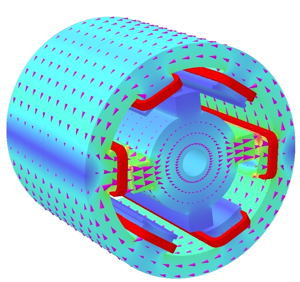A group of British companies, including Jaguar Land Rover (JLR), Ricardo and Cobham Technical Services, is designing a new generation of switched reluctance traction motors for use in future low-emission vehicles. These motors will avoid the need for rare-earth magnets which most current traction motors rely on, and which have risen in cost ten-fold in recent years.
One of the key challenges of the three-year project will be to produce a torque-dense motor that is also quiet enough for use in luxury vehicles.
The Rapid design and development of a switched reluctance traction motor project is one of 16 collaborative R&D projects that have won funding from the UK government-backed Technology Strategy Board (TSB) and the Department for Business, Innovation and Skills (BIS). TSB and BIS are meeting half of the motor project’s £1.5m costs. And between them, they are investing a total of £10m in the programme with the aim of developing vehicle technologies that will achieve significant cuts in CO2 emissions.

Cobham, the motor project leader, will develop multi-physics software (above) and capture the other partners` methodologies to design, simulate and analyse the performance of lightweight, high-efficiency, traction motors. Using Cobham’s software tools, JLR and Ricardo will then design and manufacture a prototype switched reluctance motor for luxury hybrid vehicles.
“It is important to understand the capability of switched reluctance motors in the context of the vehicle as a whole so that we can set component targets that will deliver the overall vehicle experience,” says JLR’s head of research, Tony Harper. The aim of the project, he adds, is to develop the tools and technologies for the next generation of electric motors.
